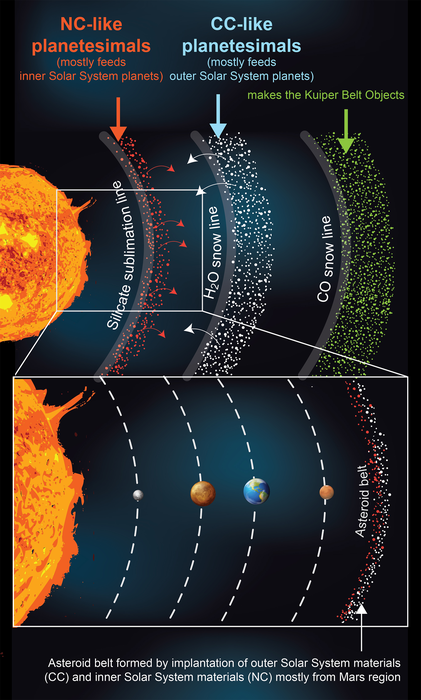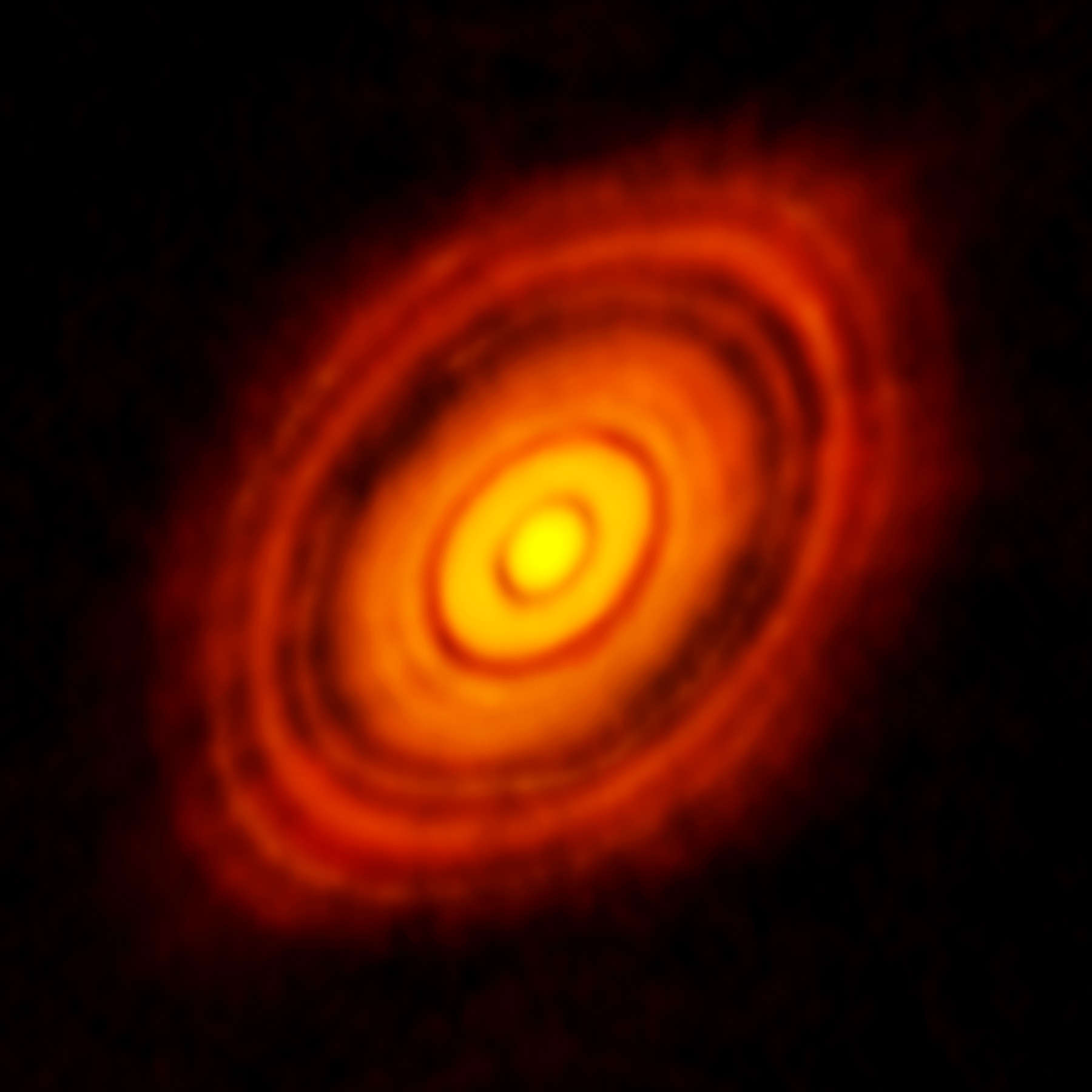Why we don’t stick to the ground with our bellies – or why our earth is not a super earth
During the search for exoplanets astronomers notice again and again that our solar system seems to be clearly out of the way. There are neither “hot Jupiters” (gas giants in the proximity of the central star) nor super earths (rock worlds with more than three times earth mass). At first it was thought that this could be due to the way of searching. The techniques used work particularly well with celestial bodies that are very large and orbit close to their star. In the meantime, however, the list of exoplanets is clearly in four digits, and super-Earths are still in the majority. So to what do we owe the fact that we don’t have to crawl across the surface with our bellies on the ground and with great effort under multiple Earth gravities, but that our ancestors were once able to learn to walk upright?
Probably it is because of how the protoplanetary disk of the sun developed. Even before there were planets in the solar system, rings had formed around the sun – bands of dust and gas that resemble Saturn’s rings, according to a new paper. “Something was happening in the solar system that prevented Earth from evolving into a much larger type of terrestrial planet, called a super-Earth,” says astrophysicist André Izidoro of Rice University. Izidoro and his colleagues have simulated the formation of the solar system hundreds of times using a supercomputer. Their model produces rings like those seen around many distant, young stars. They also faithfully reproduced several features of the solar system not included in previous models, including:
- An asteroid belt between Mars and Jupiter, containing objects from both the inner and outer solar systems.
- The positions and stable, nearly circular orbits of Earth, Mars, Venus, and Mercury.
- The masses of the inner planets, including Mars, which are overestimated by many solar system models.
- The difference between the chemical composition of objects in the inner and outer solar systems.
- A Kuiper Belt region of comets, asteroids, and small bodies beyond the orbit of Neptune.
The model assumes that within the gas and dust disk of the young Sun, three bands of high pressure were created, as observed in annular stellar disks around distant stars. They created separate reservoirs of disk material in the inner and outer solar systems, controlling how much material was available for the growth of planets in the inner solar system. Many earlier simulations of the solar system produced versions of Mars that were up to 10 times more massive than Earth. The model correctly predicts that Mars has about 10% of Earth’s mass because “Mars was born in a low-mass region of the disk,” Izidoro explains. The model also provides a convincing explanation for two solar system cosmochemical puzzles: the marked difference between the chemical compositions of inner and outer solar system objects, and the presence of each in the asteroid belt between Mars and Jupiter. Izidoro’s simulations show that the middle ring could explain this dichotomy by preventing material from the outer system from entering the inner system. The simulations also reveal that the asteroid belt is in exactly the right place, with objects from both the inner and outer regions flowing into it.

